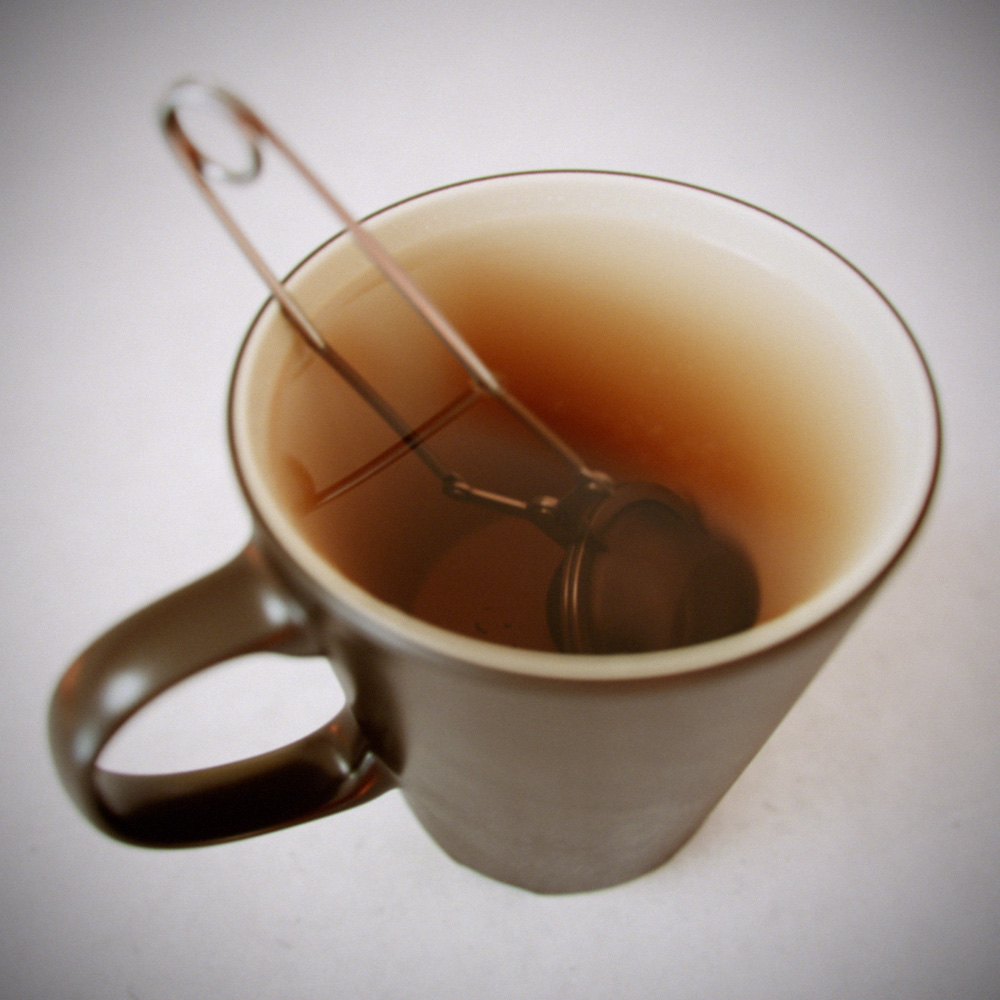
This was a quick project over the course of a weekend, where I recreated a cup of tea.
On smaller projects like this, you can really focus on the details. Here, it meant creating surface tension, small surface bubbles, condensation on the edge of the cup, small bits of tea at the bottom, as well as modeling the mesh on the tea strainer. Of course, detailed materials also play a big part in images like this.
The images were rendered with Corona, which was a pleasure to work with. It’s render settings worked out-of-the-box, which meant more time could be spent on important things such as modeling and materials. Corona’s materials are also one of, if not the best on the market. They are intuitive, easy to control, and produce great results. For example, I love the fact that volumetric absorption and scattering are integrated into the standard CoronaMtl. Also, Corona happily renders 3ds Max’s built in map types such as Composite, Falloff, and Cellular, which makes converting between different renderers so much easier.
A nice addition to Corona (since I last tried it) are its post processing options such as the built in LUT’s (which emulate different film stocks), as well as bloom and glare. On a bigger projects, you probably still want to apply LUT’s/color grading in post, for maximum control. However, for smaller projects, built in post processing is incredibly practical. The only things I added to these images in post were chromatic abberation, a slight blur, and some film grain.



The condensation on the rim was made using a PArray object, spawning MetaParticles on the selected faces of the cup. The surface bubbles (and bits of tea) were simply instanced using Object Paint.
The mesh of the tea strainer was a fun challenge. I created a sphere as a placeholder for the two halves of the mesh “ball”. I then created a plane with 4×4 segments, and started shaping the plane around one half of the sphere. Then, I subdivided the plane and started refining it to resemble the correct shape of the mesh ball. After repeating that step a few times, I ended up with a hemisphere made of quads. I then selected all the horizontal segments, created a spline of them, and enabled renderable spline. I did the same thing for the vertical lines, and I ended up with a mesh.
The only problem was that the horizontal and the vertical lines didn’t overlap – they simply clipped through each other. So, I selected every other segment loop, first for the horizontal, and scaled them in towards the center. However, the edges of the hemisphere were pushed upwards, which was wrong. So I applied a FFD modifier while still having the edges selected, and simply moving the bottom control points down. Rinse and repeat for the vertical lines, and I had a mesh hemisphere. Finally, I added another FFD modifer on both of the horizontal and vertical lines, and deformed them so that they weren’t perfectly round.
Here are some wireframes:


